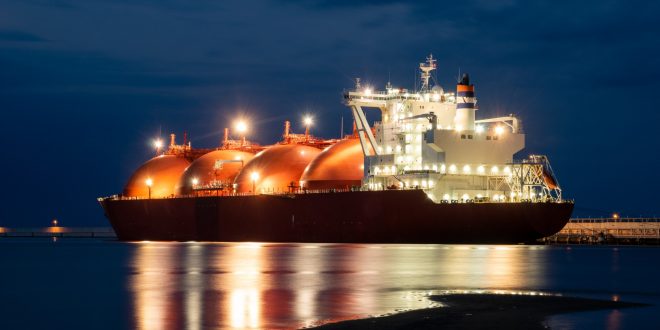In June, the European Union imported more liquefied natural gas from the United States than pipeline gas from Russia for the first time ever.
The unprecedented shift came as the EU scrambled to fill up its gas storage facilities ahead of the next heating season in fear Russia could turn off the gas tap at any moment. It also pushed LNG prices sky-high, making it unaffordable for developing countries.
“Because of the Ukraine war, every single molecule that was available in our region has been purchased by Europe, because they’re trying to reduce their dependence on Russia,” Pakistan’s Petroleum Minister Musadik Malik said earlier this month as quoted by the Wall Street Journal.
Pakistan has been suffering from blackouts because of insufficient LNG supplies that the country needs to keep its power plants going. And the reason for the insufficient supplies is that Europe can pay more for the commodity, so traders are sending their cargos there, including cargos originally destined for Pakistan and other Asian countries.
According to data from Wood Mackenzie cited by the Wall Street Journal, while Europe’s LNG imports soared 49 percent from the start of the year to mid-June, Pakistan’s imports fell by 15 percent during the same period, those to India shed 16 percent, and China’s LNG imports fell by more than a fifth.
“The European gas crisis is sucking the world dry of LNG,” Valery Chow, head of Asia Pacific gas and LNG research at Wood Mackenzie, told the WSJ. “Emerging markets in Asia have borne the brunt of this and there is no end in sight.”
Not everyone seems to be quite so pessimistic. Reuters reported in late June that demand for LNG from Asia is on the rebound, with one analyst forecasting a decline in European Union LNG imports over the second half of the year.
“There has been a growing imbalance between Asia and Europe, with European stocks growing at the expense of Asian inventories,” Reuters quoted Capra Energy managing director Tamir Druz as saying.
“We expect LNG imports for the EU, Turkey and the UK over the second half of 2022 to be lower than what we’ve seen in the first six months, with a drop of about 16%, or 10 million tonnes,” Druz added.
“Asia is already in preparation for winter, with LNG vessels being snapped up on multi-month charters, as charterers fear being caught without shipping capacity during crunch months,” said another analyst, Kaushal Ramesh from Rystad Energy.
That might be the case, but Pakistan last week failed to attract any bids in a $1-billion tender for liquefied natural gas, the WSJ noted in its report, and India has turned to more coal-fired generation to keep the lights on. In Bangladesh, like in Pakistan, blackouts have had to be enforced.
Meanwhile, long-term LNG contracts are gaining popularity as buyers realize it might be a good idea to lock in current prices, as high as they might be, to avoid further price shocks that are quite probable as the global gas market follows in the footsteps of oil with demand ahead of supply.
China, the world’s biggest LNG importer after it overtook Japan last year, closed 23 such long-term contracts in that year, Nikkei Asia reported this week. This brought the share of spot-market LNG purchases down to just 39 percent of total LNG imports.
Europe, on the other hand, has been notoriously reluctant to commit to long-term contracts for the delivery of hydrocarbons because of its energy transition plans. Now it may need to reconsider this reluctance: Qatar has informed European buyers that if they want Qatari LNG, they would need to make a long-term commitment.
U.S. LNG exporters are also fans of long-term deals, and they have been scoring points with European buyers. German utility EnBW last month sealed a deal with Venture Global for long-term LNG supply. French Engie inked a long-term supply contract with NextDecade earlier this year after initially walking out on the deal because of emission concerns.
These long-term contracts are very likely more bad news for developing nations that can hardly afford the rates being negotiated at a time of tight supply. This means that after draining the spot market of LNG cargos, wealthy Europe will now be locking up long-term supply, too, thanks to its deeper pockets.
These deeper pockets, however, mean that European buyers would need to continue paying a premium to Asian prices in order for the LNG to keep flowing in their direction. The spot market is still king. And it will remain tight as Russia closes Nord Stream 1 for scheduled maintenance today for ten days.
Prices might let up a little when – or if – the EU manages to fill up its gas storage facilities to the level planned earlier this year, which is 80 percent by November. Until then, there is little hope for relief among developing countries that chose to join the energy mainstream led by Europe and switch from coal to less polluting gas.

 Iran Energy News Oil, Gas, Petrochemical and Energy Field Specialized Channel
Iran Energy News Oil, Gas, Petrochemical and Energy Field Specialized Channel



